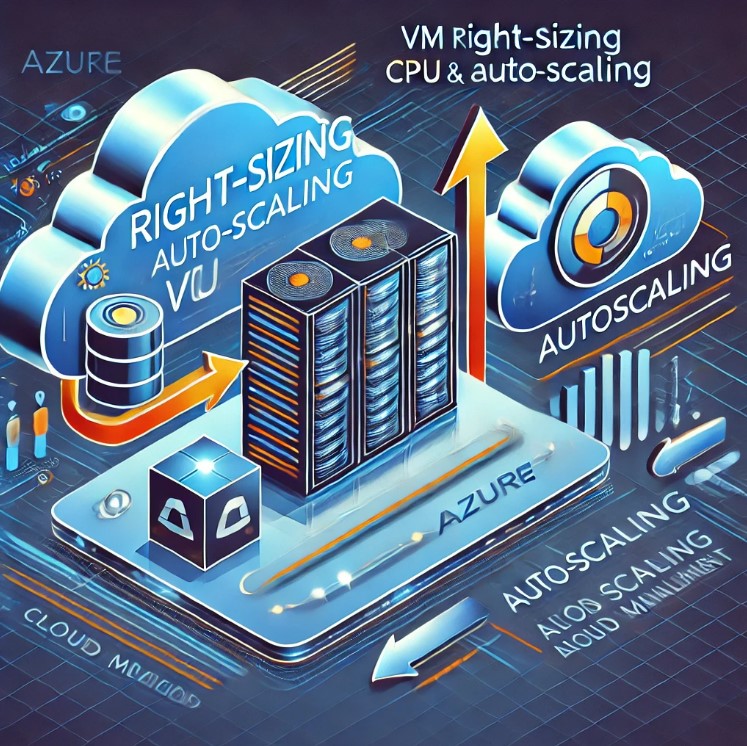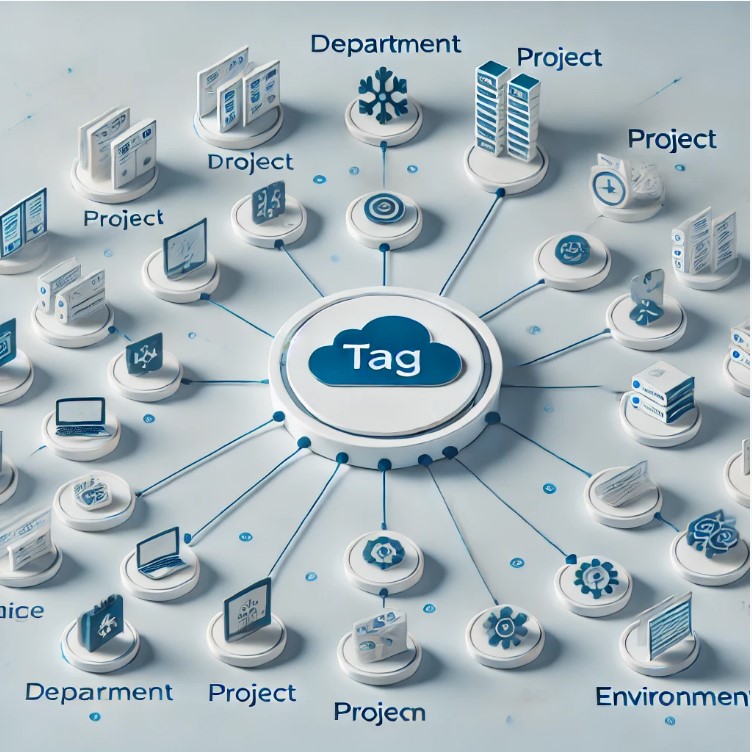Table of Contents
For cloud engineers, companies, and entrepreneurs, effectively managing Azure costs is a critical component of maintaining sustainable cloud operations. Beyond just monitoring expenses, a nuanced understanding of cost drivers, usage patterns, and optimization strategies can yield significant savings without sacrificing performance or functionality. This guide provides in-depth approaches for leveraging Azure tools and strategies to minimize expenses while keeping systems agile and resilient.
1. Start with Azure Cost Management and Billing
Azure Cost Management and Billing serves as the foundational tool for any cost management strategy, offering a suite of features designed for tracking, analyzing, and controlling cloud spending.
- Set Budgets and Alerts: Define spending thresholds tailored to specific resources, departments, or projects. With Azure’s budget alerts, you’ll receive notifications before reaching budget limits, giving your team time to adjust or reallocate resources.
- Advanced Tip: Automate budget re-evaluation monthly or quarterly. Use the Azure Cost Management API to integrate budget alerts into your CI/CD pipeline, aligning spending with workload lifecycle events.
- Learn more about Azure Cost Management for full integration capabilities.
- Utilize Cost Analysis Tools: Through the Cost Analysis tool, review detailed breakdowns of spending by resource type, subscription, or tag. Azure also offers anomaly detection to identify sudden cost spikes, which can be crucial for mitigating issues early.
- Expert Tip: Schedule weekly automated reports for key stakeholders. Integrate Cost Analysis with Power BI to create custom dashboards that provide a holistic view of cloud expenditures over time, highlighting trends and areas for action.
- Explore Power BI integration for cost analysis.
Quick Takeaway
Set a recurring schedule for cost reviews—weekly or bi-weekly—to analyze usage patterns, detect anomalies, and refine budgets as workloads evolve.
2. Optimize Resource Usage
Resource optimization directly impacts cloud expenses, especially in dynamic environments where workloads fluctuate.
- Right-Size Virtual Machines (VMs): Azure Monitor collects metrics, such as CPU and memory usage, which you can use to assess VM performance. If usage remains consistently low (e.g., CPU <30%), consider downsizing or switching to a burstable VM, which allows for on-demand scaling.
- Pro Tip: For enterprise environments, consider Azure AutoScale with custom scaling rules to automate adjustments based on usage thresholds, ensuring resources match demand without excess.
- Learn more about Autoscale in Azure Monitor.
- Shut Down Idle Resources: Avoid costs associated with idle resources by scheduling shutdowns for development or test environments using Azure Automation.
- Advanced Tip: For large-scale environments, use Azure Policy to enforce scheduled shutdowns across non-production resources automatically.
- Read about Azure Automation for more on automating resource control.
Quick Takeaway
For resources that don’t require 24/7 availability, leverage Azure’s “Start/Stop VMs during off-hours” feature to automate shutdowns and reduce costs.
3. Choose the Right Pricing Model
Selecting the appropriate pricing model is a fundamental aspect of cost optimization, particularly for predictable or high-volume workloads.
- Reserved Instances (RIs): By committing to a 1- or 3-year reservation, you can save up to 72% compared to pay-as-you-go rates. Reserved instances are ideal for stable, long-term workloads.
- Advanced Tip: Use Azure Cost Calculator to simulate savings with different RI plans before committing. Combine RIs with auto-scaling to ensure availability while benefiting from savings.
- Explore the Azure Pricing Calculator for more insight into potential savings.
- Spot VMs for Intermittent Workloads: Spot VMs provide steep discounts on Azure’s unused capacity. They are suitable for non-time-sensitive workloads, like batch processing or distributed training.
- Pro Tip: Set up preemption-aware architectures using Azure Kubernetes Service (AKS) with Spot VMs to automate failover if Spot capacity is reclaimed.
- Learn more about Spot VMs and their use cases.
Quick Takeaway
Blend reserved instances with Spot VMs to maximize savings for workloads that can tolerate interruptions.
4. Use Azure Advisor to Identify Optimization Opportunities
Azure Advisor provides AI-driven recommendations based on your resource configurations and usage patterns, making it a powerful tool for maintaining cost-efficiency.
- Cost Recommendations: Azure Advisor flags idle or underused resources, suggesting options to resize, reconfigure, or decommission them to minimize costs.
- Expert Tip: Integrate Advisor recommendations with Azure Logic Apps to automatically create work items in your ITSM tool, streamlining implementation of cost-saving suggestions.
- Read more on Azure Advisor and its advanced use cases.
Quick Takeaway
Schedule periodic Advisor reviews to capitalize on real-time recommendations for cost optimization.
5. Leverage Tagging for Better Cost Tracking
Tagging resources enables granular tracking and management, allowing organizations to allocate costs by team, project, or application.
- Add Tags to Resources: Consistent tagging practices allow you to categorize and monitor cloud spending accurately. Consider tags like
Environment,Department, andProjectto create detailed cost breakdowns.- Pro Tip: Implement Azure Policy for tagging enforcement across subscriptions, ensuring new resources have mandatory tags, which minimizes untagged expenses.
- Learn more about Azure Policy and its role in tagging management.
Quick Takeaway
Use tags in Cost Management reports to filter and allocate expenses precisely, helping identify opportunities for resource reallocation and cost-saving.
6. Enable and Configure Cost-Effective Storage Options
Azure Storage provides multiple tiers to balance access speed and cost-effectiveness, especially beneficial for data-driven applications.
- Choose the Right Storage Tier: The
Hottier is optimal for frequently accessed data, whileCoolorArchivetiers offer lower costs for less frequently accessed data.- Expert Tip: Configure lifecycle management policies to automate data tiering and deletion. Use Azure Blob Storage lifecycle rules to manage data that no longer needs premium storage levels.
- Explore Blob Storage Lifecycle Management for automated storage optimization.
Quick Takeaway
Automate storage management with lifecycle rules to ensure efficient and cost-effective data tiering.
7. Implement Automation for Cost-Effective Management
Automation is essential for cost control, allowing teams to manage resources dynamically without constant intervention.
- Azure Automation and Logic Apps: Automate routine tasks such as VM shutdowns, scale adjustments, and clean-ups with Azure Automation and Logic Apps.
- Pro Tip: Combine PowerShell scripts with Azure Automation to create highly customizable, repeatable tasks across your cloud resources.
- Read more about Automation with Azure for enhanced operational efficiency.
- Serverless Computing with Azure Functions: For applications with intermittent usage, serverless options like Azure Functions offer a cost-effective solution, charging only for execution time.
- Advanced Tip: Consider durable functions for workflows that require reliable state-tracking, as they offer significant cost savings over VM-based architectures.
- Learn about Azure Functions and their serverless advantages.
Quick Takeaway
Use automation to standardize cost-effective practices and reduce manual oversight, saving time and resources.
8. Track, Review, and Refine Your Cost Management Strategy
Effective cost management is an iterative process that requires continuous review and adjustment.
- Monthly and Quarterly Reviews: Conduct regular cost reviews and adjust resources, budget allocations, and configurations based on usage patterns and stakeholder feedback.
- Pro Tip: Build a Power BI dashboard to track KPIs, such as cost per application or per user, allowing stakeholders to visualize and act on spending trends immediately.
- Explore Power BI integration for real-time cost tracking.
Quick Takeaway
Establish a process for continuous cost review and refinement to ensure your strategy remains aligned with business goals.
Conclusion
Mastering Azure cost management involves blending technical skill with a proactive strategy. By leveraging tools like Azure Cost Management, Azure Advisor, and resource tagging, as well as exploring automation and serverless options, cloud engineers and administrators can build resilient, cost-efficient cloud environments. Regular reviews, automation, and a willingness to adapt will be key as your infrastructure needs evolve.
For additional information, refer to Microsoft Azure’s Cost Management resources for continuous learning and the latest updates in Azure cost optimization techniques.
Franck Kengne
Tech Visionary and Industry Storyteller
Read also
November 19, 2024
November 19, 2024
November 19, 2024




